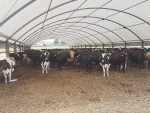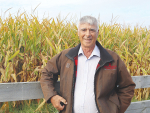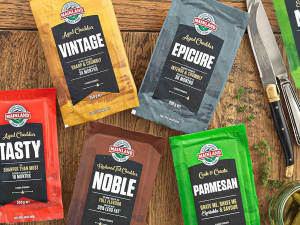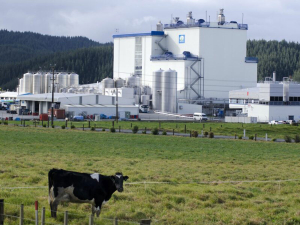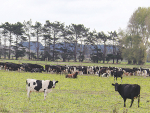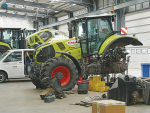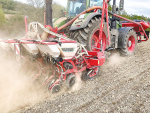Most farmers are focused on extracting as much milk as possible from home-grown feed.
The good news is there are some outstanding maize crops in many regions which will be ready for silage harvest in just a few weeks. Harvested and ensiled correctly, these crops will provide a substantial volume of high quality feed.
Maize silage is the best autumn feed for dairy cows. It is cost effective, highly palatable and can be fed in large amounts when required. Feeding maize silage in the autumn allows farmers to build pasture levels while at the same time milking on for longer and lifting cow condition score.
Under the tight payout conditions, farmers can get the most from their maize silage by paying even more attention to the usual good management guidelines. These include:
Harvesting at the correct maturity
The ideal maize silage harvest drymatter is 30-38%. Crops which are >38% drymatter are more difficult to compact, resulting in a slower fermentation and higher losses at feed-out time.
Using a plant processor
The aim is to ensure that 99% (target minimum 80%) of the kernels are broken into at least four pieces. This will allow the rumen microbes better access to high energy maize starch.
Applying a quality silage inoculant
Don't be tempted to cut this out of your system. Research shows that even at a $4.00 payout, proven products like Pioneer brand 1174 or 1132 deliver a good return.
Doing a good job on the stack
Compact it well, put the cover on straight away, tape the joins, seal the edges and weigh it down with tyres that are touching. Don't forget to put rat baits in stations around the stack.
Introducing maize silage slowly
This is particularly important if you haven't been feeding a grain source, as it will allow the rumen microbes time to adapt to higher dietary starch levels. Feeding too much maize silage too soon can result in a lot of grain in the manure and/or animal health issues. Start with no more than 1–3kg of DM per cow per day (approx. 3-9kg fresh weight of maize silage) for the first week and then lift the feeding rate to the desired level.
Minimising feed-out losses
This can be done by applying an aerobic stability inoculant (e.g. Pioneer brand 11C33) and removing maize silage from the stack or bunker carefully so the face remains tight.
Once maize paddocks have been harvested, the next big decision is what to do with the paddocks. If you do not have additional pastures which urgently need renewing, consider planting annual ryegrass or a winter crop in your maize paddocks and putting them back into maize in the spring.
We know maize can be grown twice in high fertility paddocks (including those with a history of effluent application) without the need for additional fertiliser*. Establishing an annual or a winter crop will reduce costs and allow you to get more feed over the winter when compared to planting new perennial pasture.
If you would like to discuss the options for your maize paddocks, or would like advice on how you can maximise your returns from maize silage this season, call your local Pioneer representative on 0800 PIONEER (746 633).
*Always soil test and apply nutrients as required
• Ian Williams is a Pioneer forage specialist. Contact This email address is being protected from spambots. You need JavaScript enabled to view it.


